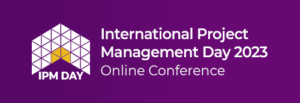By Harold Kerzner, Ph.D.
November 15, 2023
All management disciplines, project management included, contain words and expressions that have meanings susceptible to change over time. Some expressions, such as the work breakdown structure (WBS) and statement of work (SOW) have undergone very few changes. On the other hand, the term “project value” has had multiple interpretations based upon the type of project, when in the project life cycle the term is used, and who is using the term.
Introduction to Value
Value is what something is worth, either to the individual using the word or the organization. The importance of understanding value appeared several decades ago in articles discussing systems engineering activities. The two components of value were:
- Value engineering
- Value analysis
The terms were designed for different points in a product’s life cycle. Value engineering (VE) was frequently used in the early life cycle phases when considering alternative approaches to a problem and possible scope changes that could improve the final value of the product. VE decisions were heavily oriented around quality, cost, and profitability considerations. Many engineering companies had VE departments as part of the engineering directorate.
Value analysis (VA) was used at the end of the product life cycle to see how value impacted the organization’s efficiency and effectiveness, and which features in the final product were considered as value by the users to be considered in the development of other products.
There is a valid argument that VE is the contractor’s definition of value and VA is the customer’s or user’s definition of value. VE and VA terms are most frequently used on government projects rather than in traditional project management applications.
Earned Value Measurement
By the 1960s, the U.S. Department of Defense (DoD) was struggling with interpreting the true status of the projects being performed by their multitude of contractors. Each contractor had their own unique approach for status reporting and DoD was challenged in determining true performance. VE and VA were still being reported on some projects. But the majority of DoD’s projects were contracted with well-defined scope statements that mandated detailed upfront planning.

DoD created the earned value measurement system (EVMS) heavily focused on projects with well-defined upfront SOWs with the belief that contractor status reporting could be standardized, and that project success could be determined just with time, cost, and scope metrics. Everyone knew that other metrics were needed as well, but metric measurement techniques were not advanced yet for measuring other metrics. EVMS is still being used, especially on government projects.
The benefit of using EVMS is that it provides an indication of whether the rate at which you are completing the work (i.e., scope) and the spending is at the speed defined in the project plan. Some people believe that EVMS is used primarily to control costs. Unfortunately, EVMS cannot predict if, once the project is completed, the benefits and value you expected will occur. Any company can create a product within the planned time, cost, and scope, and then discover there are no buyers for the product.
EVMS has undergone significant criticism because even though the word “value” is included, there is no direct correlation between value and EVMS. You cannot predict the value of a deliverable simply from EVMS calculations.
Some of the criticism of EVMS includes:
- No direct relationship to the project’s benefits and value
- No direct relationship to project success simply using time, cost, and scope metrics
- Incorrect usage of the word “value”
- No direct alignment to strategic business objectives
- Applicable mainly to projects with upfront well-defined scope, SOW, and a baselined project plan
There has been significant criticism of implementing EVMS on projects that are using Agile or Hybrid methodologies. Flexible methodologies, such as Agile and Hybrid approaches, assume that the initial plan is subject to change. Traditional EVMS usage works best when the initial plan does not change. There are better techniques than EVMS that can be used with flexible methodologies.
Value vs. Success
Project success means different things to different people. Contractors and customers can have different definitions of success. The customer’s definition of success is usually the value they recognize in the deliverable of the project once they receive it and use it. True value is usually measured by value-in-use by the customer.

Some contractors spend a significant amount of time watching their customers use their products. The contractors ask the customers what value they see in the product while using it, and what changes they might want in future products. This keeps contractors in touch with the customer’s definition of value.
And the Future is?
Given the growth in the importance of project value consideration and the criticism of using EVMS on some types of projects, what does the future look like?
First, value has taken on a new partner, namely business benefits. When senior management in contractor organizations approve a project, the trend appears to focus upon expected benefits rather than value. The benefits expected are then aligned to the firm’s strategic business objectives.

Value is being defined by the customer. Contractors must collaborate frequently with customers to perform a value assessment and determine what components and attributes the customer considers as important in their definition of value. The components can include efficiency, effectiveness, technical superiority, functionality, life expectancy, cost, safety, risks, etc. These components and attributes are then identified as project success and failure criteria for decision-making by the project team. The value components identified by the customer allow the contractor to make value-focused decisions and identify future business opportunities.
There has been a significant growth in the establishment of both tangible and intangible metrics for project teams to track. Many of these new metrics track and report the value components identified by the customers. Business value and business benefits tracking has become just as important as tracking time, cost, and scope.
There are more than a dozen methodologies that can be used in project management. Waterfall, Agile, Scrum and Hybrid approaches are growing in acceptance. Over time, there may be more than 25 to 30 flexible methodologies in use.
At the onset of a project, the team will select the methodology best suited to monitor and control the benefits and value expectations. New forms of EVMS will be created that will allow for changes in benefits and value expectations due to scope changes that will occur during project execution.
The contractor’s definition of project success will be measured in benefits achieved and aligned to strategic business objectives. The customer’s definition of project success will be measured by the achievement of value when using the project’s deliverables.
Conclusion
Project teams must have a project value mindset. Project management literature is now focusing on how projects create value for customers and stakeholders rather than just deliverables. This will require a better understanding of benefits and value, closer collaboration with clients, and a realization that metrics other than time, cost, and scope will be necessary.

There will be a significant growth in the use of value metrics for customer reporting. Techniques such as Agile and Hybrid methodologies are already using value metrics. Value is now getting the attention it truly deserves.
Dr. Harold D. Kerzner, Ph.D., is Senior Executive Director at the International Institute for Learning, Inc., a global learning solutions company that conducts training for leading corporations throughout the world.
He is a globally recognized expert on project, program, and portfolio management, total quality management, and strategic planning. Dr. Kerzner is the author of bestselling books and texts, including the acclaimed Project Management: A Systems Approach to Planning, Scheduling, and Controlling, Thirteenth Edition. His latest book, Project Management Next Generation: The Pillars for Organizational Excellence, co-authored with Dr. Al Zeitoun and Dr. Ricardo Viana Vargas, delivers an expert discussion on project management implementation of all kinds.
Dr. Harold Kerzner is a Keynote in this year’s IPM Day 2023! Register here.
Disclaimer: The ideas, views, and opinions expressed in this article are those of the author and do not necessarily reflect the views of International Institute for Learning or any entities they represent.



